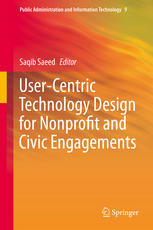

Most ebook files are in PDF format, so you can easily read them using various software such as Foxit Reader or directly on the Google Chrome browser.
Some ebook files are released by publishers in other formats such as .awz, .mobi, .epub, .fb2, etc. You may need to install specific software to read these formats on mobile/PC, such as Calibre.
Please read the tutorial at this link: https://ebookbell.com/faq
We offer FREE conversion to the popular formats you request; however, this may take some time. Therefore, right after payment, please email us, and we will try to provide the service as quickly as possible.
For some exceptional file formats or broken links (if any), please refrain from opening any disputes. Instead, email us first, and we will try to assist within a maximum of 6 hours.
EbookBell Team

4.8
34 reviewsDue to the increased global political importance of the nonprofit sector, its technological support and organizational characteristics have become important fields of research. In order to conduct effective work, nonprofits need to communicate and coordinate effectively. However, such settings are generally characterized by a lack of resources, an absence of formal hierarchical structures and differences in languages and culture among the activists. Modern technologies could help nonprofit networks in improving their working. In order to design appropriate technological support for such settings, it is important to understand their work practices, which widely differ from traditional business organizations. This book aims to strengthen the body of knowledge by providing user studies and concepts related to user centered technology design process for nonprofit settings. The examination of ethnographic studies and user centered evaluation of IT artifacts in practice will further the understanding of design requirements of these systems. This book includes chapters from leading scholars and practitioners on the technology design process examining human centered factors. The chapters will focus on developed and developing countries as they both have unique issues in technology design. The book will be useful or of interest to academics from a range of fields including information systems, human computer interaction, computer supported cooperative work and organizational science as well as for government officials and governmental organizations.